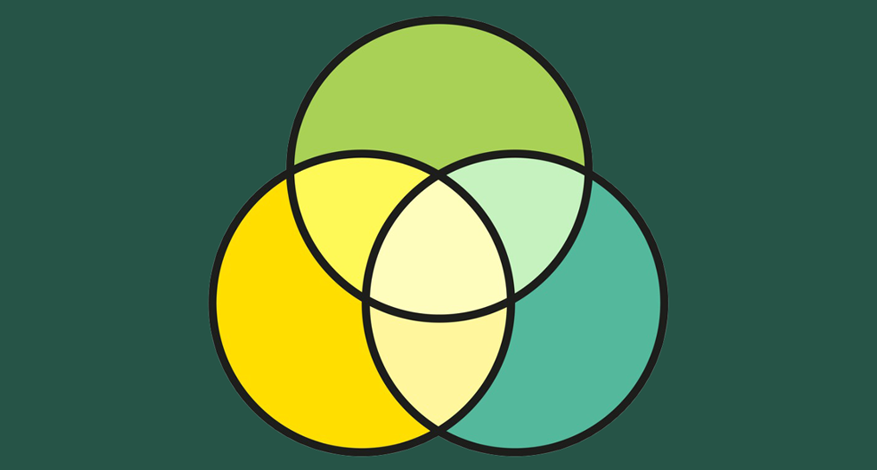
From compassion fatigue to compassion satisfaction
October 24, 2022
Which hybrid work model is right for your client?
October 24, 2022Examining the role of rational, intuitive and emotional dimensions in career decision-making
Hélène Brisebois

Many researchers agree that it is important to consider the rational and conscious dimension, the intuitive and unconscious dimension, as well as emotions when making career decisions (Baumgardner, 1977; Cournoyer & Lachance, 2018; Falardeau, 2007; Gelatt, 1989; Krieshok, 1998; Krieshok et al., 2009; Krieshok et al., 2011; Lecomte & Savard, 2008, 2009; Motl et al., 2018).
As such, this article discusses how these three dimensions combine with respect to career decision-making.
The rational and conscious dimension
When it comes to decision-making, many people will see themselves using a rational and analytical approach. There are many aspects to consider when looking ahead into the long term: “Will my career choice provide enough income for the life I want? What about job stability? What qualifications do I need to move in this direction? How much study time is required? What are the costs? What are the risks if I drop out?”
By taking a rational, logical and concrete approach to career decision-making, individuals can therefore match their personal characteristics with career characteristics. This can be done through verbal communication, rational analysis work and psychometric testing (Krieshok, 1998; Krieshok et al., 2009; Krieshok et al., 2011; Motl et al., 2018). That said, this approach does not account for emotions or the intuitive dimension.
Intuitive and unconscious dimension
The intuitive and unconscious dimension lies beyond the conscious and rational dimension. Decision-making based on the intuitive and unconscious dimension allows an individual to choose a meaningful career that leads to self-fulfillment. The flow concept (Collin et al., 2022) can also be included in this dimension. In short, intuition can help with decision-making, as reported by a number of authors (Cournoyer & Lachance, 2018; Krieshok, 1998; Krieshok et al., 2009; Krieshok et al., 2011; Motl et al., 2018).
“Decision-making based on the intuitive and unconscious dimension allows an individual to choose a meaningful career that leads to self-fulfillment.”
In this context, we might wonder how to tap into our intuition and unconscious. To do this, Motl et al. (2018) suggest “journal writing, guided imagery, and counselling” (p. 618).
Emotions
It should be noted that many authors suggest that emotions, which also contribute to decision-making, are part of the intuitive and unconscious dimension. According to Falardeau (2007), Prévost (2021) and Young et al. (2015), being in touch with emotions can facilitate the decision-making process.
For example, the more intense the emotion, the more important the subject of that emotion is for a person, which highlights the factors to consider in decision-making (Prévost, 2021). Positive emotions foster engagement and the understanding of emotions helps with the career selection process (Prévost, 2021).
So, how do we get in touch with our emotions in this context? Among other things, Prévost (2021) suggests striving to explore and understand emotions.
Read more
Choose crisis before crisis chooses you
Supporting homeless clients starts with understanding their unique stories
‘Crossing the Rubicon’: Turning career action crises into opportunities
Actions that combine all three dimensions
In essence, rationality, intuition and emotions are three dimensions that can work together to facilitate career decision-making. However, this raises the following question: What action can be taken to combine these three dimensions in this context? According to my study, both artistic creation and art therapy could set the stage for bringing these three dimensions into play (Brisebois, 2021). It is important to note, however, that art therapy is a practice specific to art therapists.
As for the approaches to take to incorporate these three dimensions in the career decision-making process, I would also mention Gati and Asher’s (2001) PIC (Prescreening, In-depth exploration and Choice) model, as it takes into account both rational and intuitive decision-making methods (Gati & Kulcsar, 2021).
Another way to use these three dimensions when making decisions is to engage in activities that foster occupational exploration and the experience of career decision-making. This is what Krieshok et al. (2009) suggest in their trilateral model of career decision-making, which combines conscious and non-conscious processes, as well as engagement. In this model, the non-conscious system involves intuition and emotion, while engagement, which falls under the experience of career decision-making, includes career exploration and enrichment.
Volunteering, mentoring, information sessions and work experiences are also endeavours that can provide access to engagement and thus to career decision-making.
Conclusion
In short, rationality allows an individual to make a connection between their personal and career characteristics while taking their reality into account; intuition provides direction toward self-fulfilment, and emotions allow them to shed light on what is important to them, among other things. Ultimately, we make the best decisions when we examine these three parts of ourselves: rationality, intuition and emotions.
Hélène Brisebois is a career counsellor. She holds a master’s degree in counselling from Université de Sherbrooke and a bachelor’s degree in psychology from Concordia University. She has many years of experience as a college-level academic advisor and employment counsellor. She has also written several professional articles on counselling and a dissertation on art therapy in counselling.
Additional sources
Lecomte, C. et Savard, R. (2008). Counseling de carrière : enjeu d’orientation et d’insertion professionnelle. [Recueil inédit]. Université de Sherbrooke, Faculté d’éducation.
Lecomte, C. et Savard, R. (2009). Counseling de carrière avec ses enjeux d’orientation, de réorientation, d’insertion, de réinsertion, d’adaptation et de réadaptation. [Recueil inédit]. Université de Sherbrooke, Faculté d’éducation.
This article was translated from the original French.

